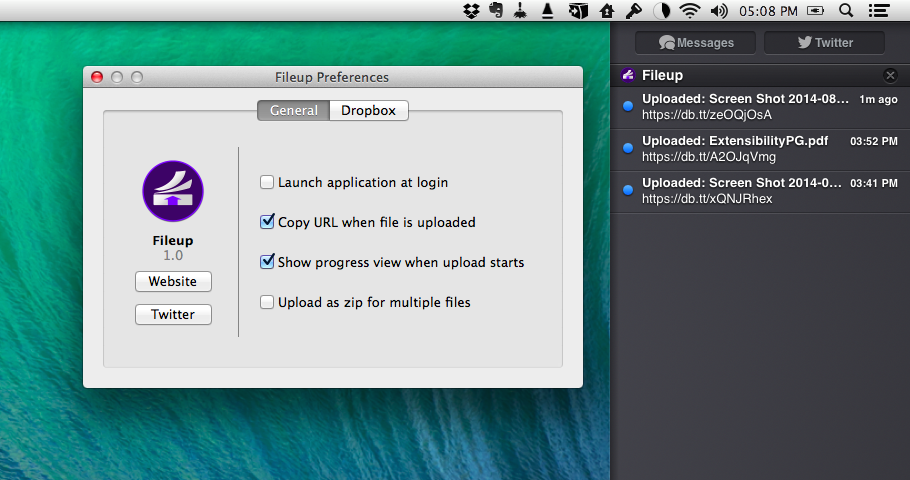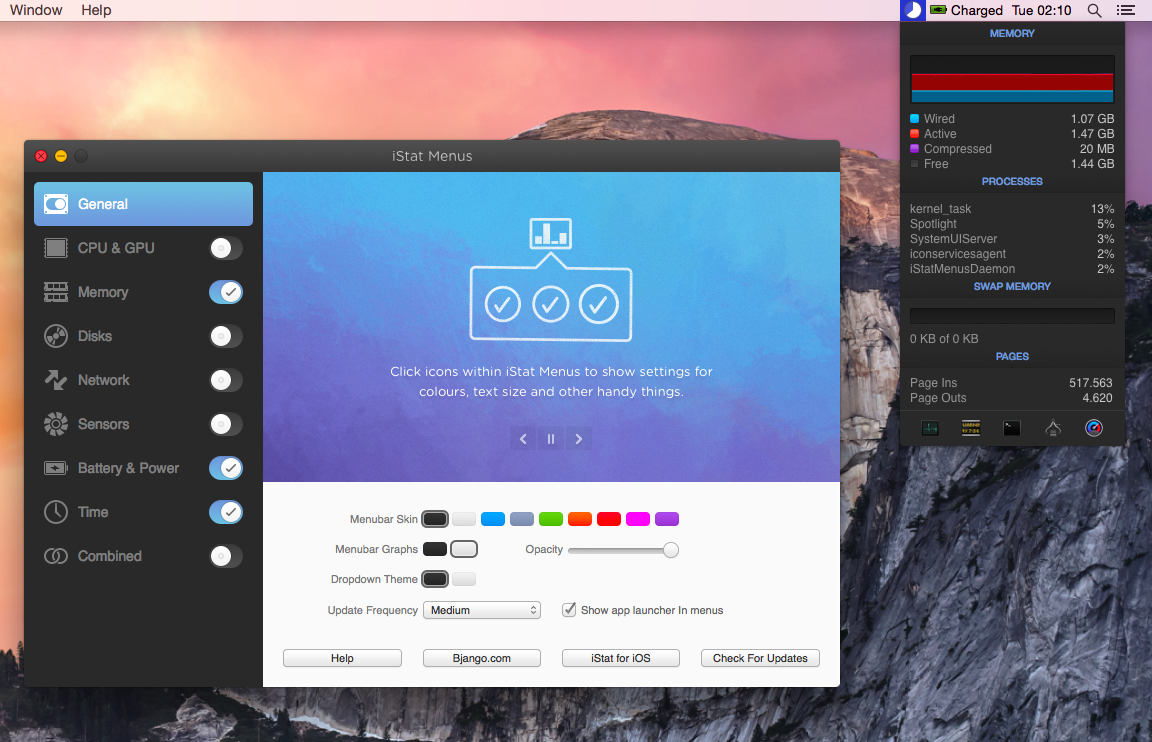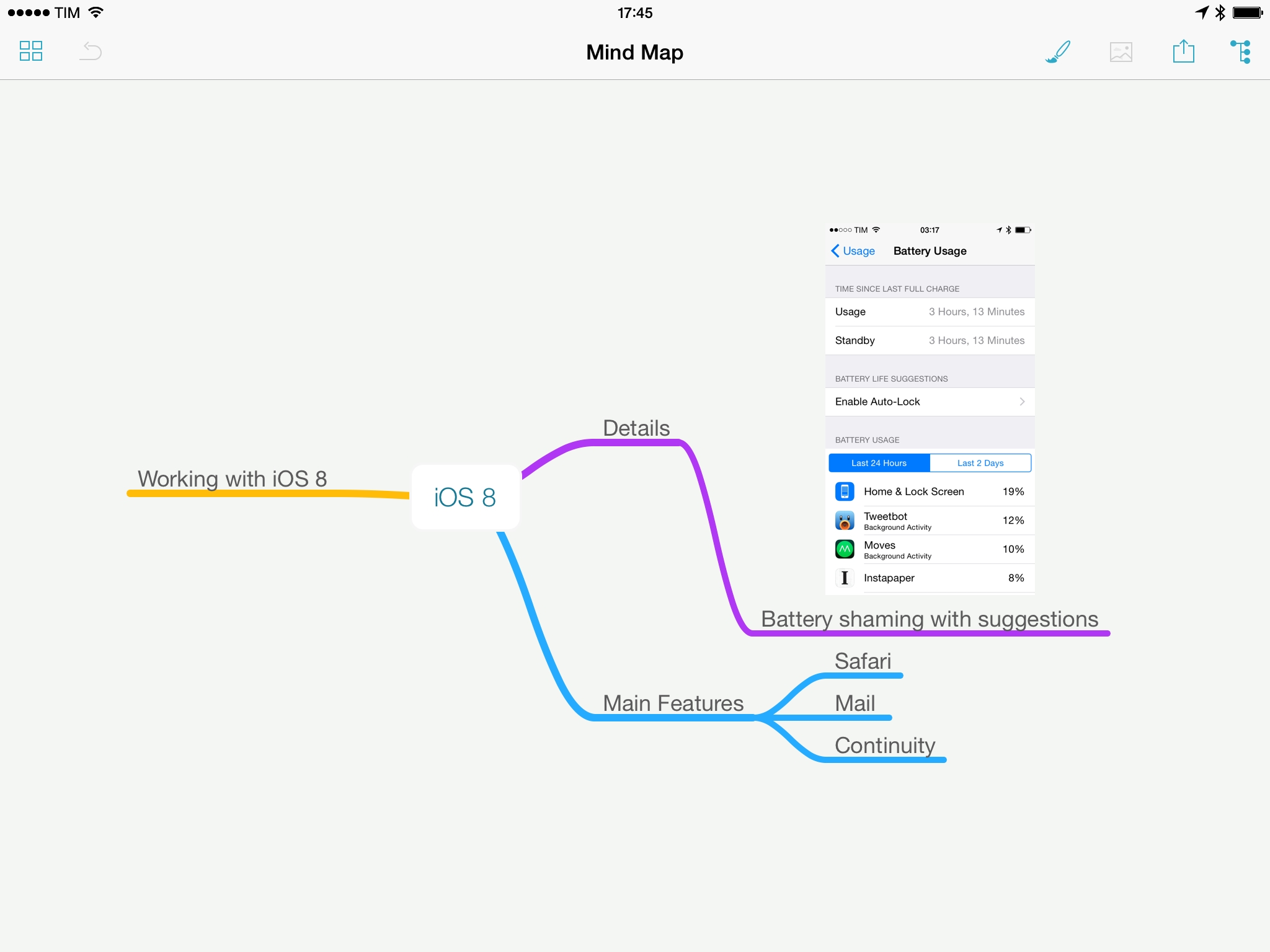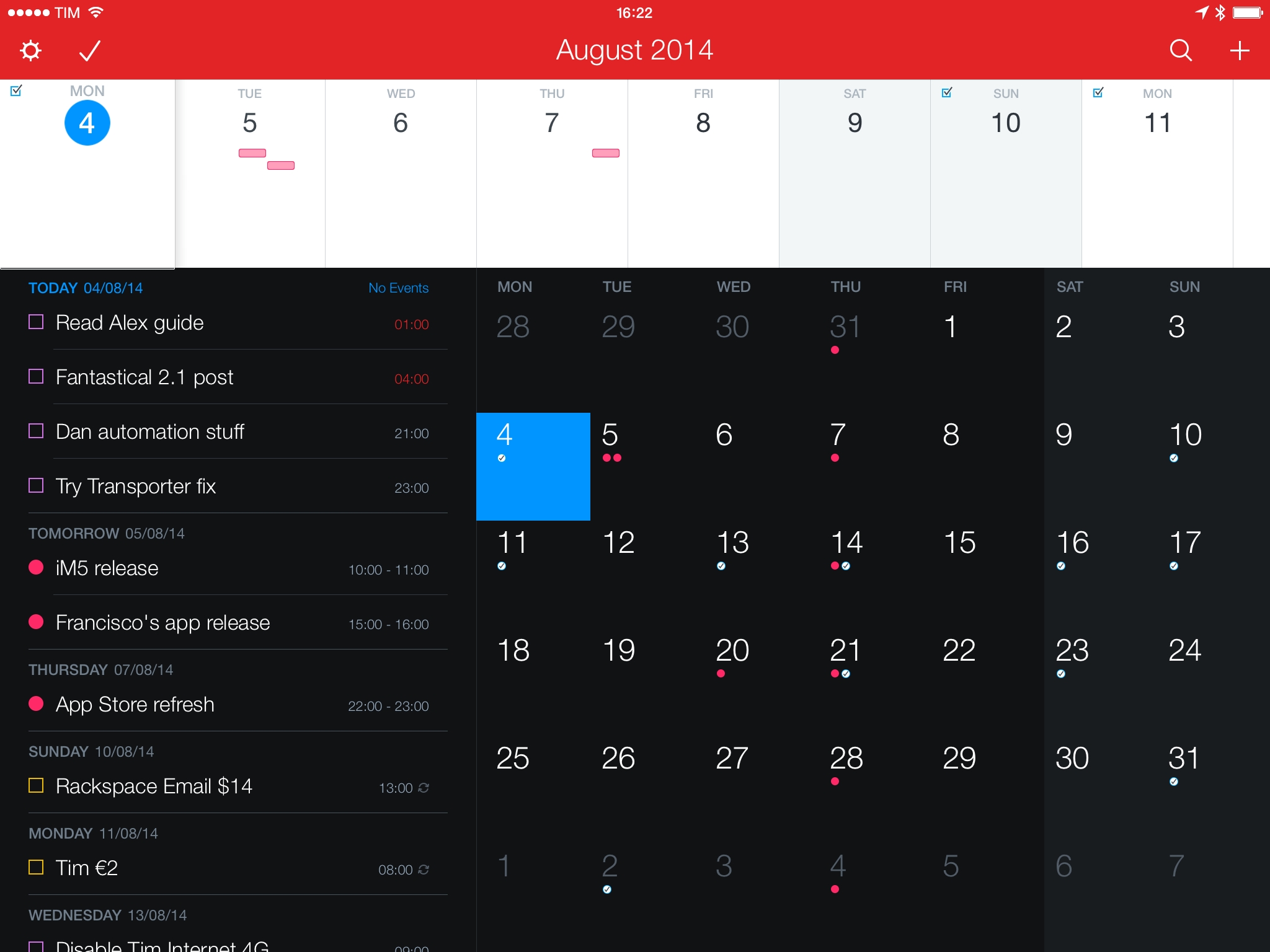Developed by Francisco Cantu, Fileup is a new OS X utility that lets you quickly share files through Dropbox by dragging them onto a menu bar icon. Unlike other apps that have implemented the same sharing mechanism and user interaction (which Dropbox surprisingly doesn’t support with their own menu bar app), Fileup adds filters for file types, integrates with Notification Center, and lets you set up templates for naming files through a simple syntax. The idea is reminiscent of Vemedio’s shortlived Sharebox experiment, but, as required by Dropbox, Fileup is a separate menu bar utility that doesn’t interact with the official Dropbox client.
Fileup Simplifies Dropbox Sharing with Drag & Drop and File Filters
Making the Switch from Aperture to Adobe Photoshop Lightroom→
Adobe yesterday published a six-page document outlining a workflow for those users who want to transition from Aperture to Lightroom. Its an interim measure for those users who want to switch to Lightroom now, but Adobe also affirmed their commitment to develop a proper migration tool for Aperture and Adobe Lightroom.
At Adobe, we’re working on a migration tool to help you bring your photos into Adobe Photoshop Lightroom from Aperture, but if you’re eager to switch before the tool is ready, this guide can help ease your transition. We recognize that this migration may be a challenging process and offer the following resources and methodology to help get you up to speed with Lightroom and provide a road map for successfully migrating your photos.
This all comes after Apple announced in late June that it was ending development of Aperture. Apple is instead focusing its development efforts on the new Photos app, launching on Yosemite early next year.
iStat Menus 5 Brings New Design, Per-App Stats, Yosemite Support, and More
Two years after the release of version 4.0, Bjango has launched iStat Menus 5 today, adding hundreds of new features and improvements, and bringing a new design for both OS X Mavericks and Yosemite.
App Store Freshness→
David Smith has a great analysis of the “freshness” of apps on the App Store – data about when apps were last updated, for both Top Charts and the entire App Store.
For a very long time I’ve talked about my concerns about the size and health of the iOS App Store catalog. The App Store currently sits around 1,200,000 apps. For years the depth and diversity of the App Store has been one of the platforms strongest differentiators. However, as it grows the challenge becomes ensuring that it doesn’t begin to strain under its own size.
What has always annoyed me in my discussions about how to improve the App Store was that I didn’t have actual data on the composition of the App Store. Since it wasn’t (to my knowledge) available I started working out ways to get at it myself.
The numbers about the size of the App Store in relation to updates and the release of iOS 7 last year are surprising to me, as I was expecting a much worse scenario. The charts in David’s post clearly show a developer interest in updating for iOS 7 – make sure to check out the charts.
MindNode 3.2 with Image Support
MindNode, my favorite app to outline ideas visually on both iOS and OS X, was updated last week with a notable addition: embedded images.
I use MindNode to flesh out ideas and thoughts that help me find connections and relationships through the use of colors, branches, and formatting of text. Typically, large reviews, roundups, and articles for this site start as a plain text list in Evernote, but before writing in Editorial, I transform that list into a map in MindNode to get a better visual understanding of the topic(s) I want to cover. Images were an obvious candidate for mindmaps, and while other apps already supported them, I wanted to be able to insert images in maps with the simplicity of MindNode’s interface and iCloud storage.
Fantastical 2.1
Released last week, Fantastical 2.1 is a pretty big update to my favorite calendar app for iPhone and iPad that brought the usual variety of fixes and improvements, snooze options for notifications (which I don’t use, as I rely on native iCloud alerts), and other enhancements such as upcoming birthday and new event invitation notifications. Being on vacation prevented me from preparing a review in time for the update’s release (it turns out, this is not an ideal spot for good 3G coverage), but I still wanted to focus on three additions to Fantastical that I’m particularly fond of.
The Original BioShock Is Coming to iOS→
BioShock, Irrational Games’ masterpiece originally released on Xbox 360 in 2007, is coming to the iPhone and iPad this summer with a mobile port developed by 2K China, the same studio that handled XCOM: Enemy Unknown for iOS devices. BioShock is considered one of the most important games of the last generation of home consoles, and, for the upcoming mobile version, Polygon’s Brian Crecente notes that it “feels very much like the original, especially when played on an iPad and with a controller”.
In order to fit within the size limitations of the App Store, BioShock’s graphics and effects have been toned down, which, according to previews of the game published this morning, results in visually inferior experience for those who remember the original game on Xbox. Here’s Ben Gilbert, writing at Engadget:
Yes, BioShock doesn’t look as good on iOS. It’s the truth. In-game lighting and shadows are cut down pretty dramatically, as are art assets. The grandeur of Rapture is distinctly less grand, which sucks some of the life out of one of my personal favorites. The first thing you’ll notice is “iOS fire.” The game’s opening – a plane crash – puts main character Jack in the ocean surrounded by some hideously ugly fire animations. It’s the first hint that the iOS version of Rapture has been shrunken down to fit within Apple’s app store file size limitation, and it’s a nagging issue that I couldn’t shake in my hands-on time.
Over at TouchArcade, Jared Nelson has another preview of BioShock for iOS with a hands-on video:
One thing that struck me about playing Bioshock on a mobile device is that it’s a very intimate experience. Over the last decade, high end televisions and home theater systems have become common, making for incredible environments to play through immersive and atmospheric games. And Bioshock is one of the most atmospheric of all time. However, there’s really something to be said for having your very own little screen running the game, right up in your face as close as you want it to be.
BioShock was released in 2007, in the formative years of last-gen consoles. Based on the previews and first impressions published today, it sounds like modern iOS hardware would be capable of handling the original game’s graphics and assets, but file size limitations are preventing developers from putting a full console experience into an App Store download. Considering Apple’s push for console-quality game technologies such as controller frameworks and Metal, this seems fairly anachronistic.
BioShock Mobile will be released sometime this summer for iPhone and iPad at a “premium price” with no In-App Purchases, and it will include a digital art book and Game Center integration. Make sure to check out the hands-on video at TouchArcade.
A Preview of the SpeakerSlide, A Kickstarter Project
Over the past few years Apple has continued to improve the speakers in the iPhone and iPad quite significantly, except for the fact that they continue to be directed out to the side rather than the front. In fairness, this is probably the most practical location for Apple but it has meant that I’ve purposefully cupped my hand around the iPad’s speakers to help redirect the sound on a number of occasions. It is exactly this weakness where a Kickstarter project, the SpeakerSlide, is trying to improve things. It’s a simple plastic (polycarbonate) accessory that redirects the sound out to the front of the device. The SpeakerSlide team were able to ship me 3D-printed evaluation models of the SpeakerSlide for both iPhone and iPad, so I gave the product a test run over the last week.
I first tested the SpeakerSlide with the iPad Air and I can honestly say that the effect it had was instantly noticeable and fairly significant. Sound coming from the iPad actually sounded like it was directed to me, which shouldn’t be surprising, but what was surprising to me was how much more natural that felt. When I started taking the SpeakerSlide on and off to try and hear the difference, the effect was even more noticeable. It almost felt like the sound (without the SpeakerSlide) was muffled because of the direction of the speakers. Because the sound is being directed at you with the SpeakerSlide, it also means you don’t need to have the volume as loud as you would without it, and that shouldn’t be underestimated.
Yep, Apple’s ‘Stickers’ Ad Gave MacBook Sticker Sellers a Huge Boost
When Apple published their new ‘Stickers’ ad for the MacBook Air last week, I presumed it would be a boon for sellers of MacBook stickers and decals. So earlier this week I decided to reach out to a few sellers of MacBook stickers and decals to see what kind of impact the ad from Apple has had on their store visits and sales.
Now this was not an in-depth investigation and the result is probably what you would have guessed: visits and sales rose dramatically last week when Apple’s ad was released. It was the universal reaction I got from the sellers I talked to.
One of the sellers that was willing to give me more detailed information was Benjamin Clark from The Decal Guru. They saw a quadrupling of orders for MacBook decals since the airing of Apple’s ad. In terms of unique visitors they saw an increase from a steady 500 per day (prior to the ad) to 4,500 at its highest last week.







